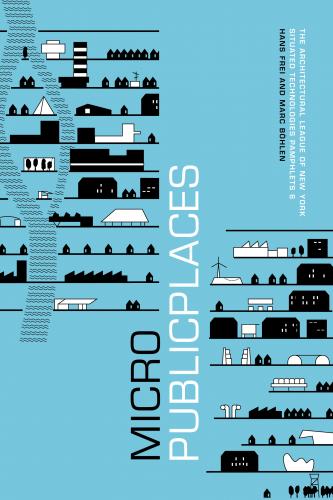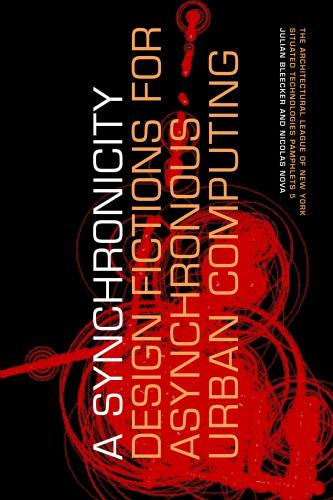Marc Böhlen and Hans Frei (eds.): Situated Technologies Pamphlet 6: MicroPublicPlaces (2010)
Filed under pamphlet | Tags: · architecture, city, interactive design, labour, life, situated technologies, ubiquitous computing, urban computing, urbanism

In response to two strong global vectors: the rise of pervasive information technologies and the privatization of the public sphere, Marc Böhlen and Hans Frei propose hybrid architectural programs called Micro Public Places (MMPs). MPPs combine insights from ambient intelligence, human computing, architecture, social engineering and urbanism to initiate ways to re- animate public life in contemporary societies. They offer access to things that are or should be available to all: air, water, medicine, books, etc. and combine machine learning procedures with subjective human intuition to make the public realm a contested space again.
Series Editors: Omar Khan, Trebor Scholz, Mark Shepard
Publisher: The Architectural League of New York
PDF
Get a printed copy from Lulu.com.
Julian Bleecker and Nicolas Nova (eds.): Situated Technologies Pamphlet 5: A synchronicity: Design Fictions for Asynchronous Urban Computing (2009)
Filed under pamphlet | Tags: · architecture, city, interactive design, internet of things, labour, life, situated technologies, ubiquitous computing, urban computing, urbanism

In the last five years, the urban computing field has featured an impressive emphasis on the so-called “real-time, database-enabled city” with its synchronized Internet of Things. Julian Bleecker and Nicholas Nova argue to invert this common perspective and speculate on the existence of an “asynchronous city”. Through a discussion of objects that blog, they forecast situated technologies based on weak signals that show the importance of time on human practices. They imagine the emergence of truly social technologies that through thoughtful provocation can invert and disrupt common perspectives.
Series Editors: Omar Khan, Trebor Scholz, Mark Shepard
Publisher: The Architectural League of New York
PDF
Get a printed copy from Lulu.com.
Simon Sadler: Archigram: Architecture without Architecture (2005)
Filed under book | Tags: · architecture, avant-garde, city, london, social space

“In the 1960s, the architects of Britain’s Archigram group and Archigram magazine turned away from conventional architecture to propose cities that move and houses worn like suits of clothes. In drawings inspired by pop art and psychedelia, architecture floated away, tethered by wires, gantries, tubes, and trucks. In Archigram: Architecture without Architecture, Simon Sadler argues that Archigram’s sense of fun takes its place beside the other cultural agitants of the 1960s, originating attitudes and techniques that became standard for architects rethinking social space and building technology. The Archigram style was assembled from the Apollo missions, constructivism, biology, manufacturing, electronics, and popular culture, inspiring an architectural movement—High Tech—and influencing the postmodern and deconstructivist trends of the late twentieth century.
Although most Archigram projects were at the limits of possibility and remained unbuilt, the six architects at the center of the movement, Warren Chalk, Peter Cook, Dennis Crompton, David Greene, Ron Herron, and Michael Webb, became a focal point for the architectural avant-garde, because they redefined the purpose of architecture. Countering the habitual building practice of setting walls and spaces in place, Archigram architects wanted to provide the equipment for amplified living, and they welcomed any cultural rearrangements that would ensue. Archigram: Architecture without Architecture—the first full-length critical and historical account of the Archigram phenomenon—traces Archigram from its rediscovery of early modernist verve through its courting of students, to its ascent to international notoriety for advocating the “disappearance of architecture.””
Publisher MIT Press, 2005
ISBN 0262693224, 9780262693226
242 pages
PDF, PDF (11 MB, updated on 2016-5-7)
Comments (2)
